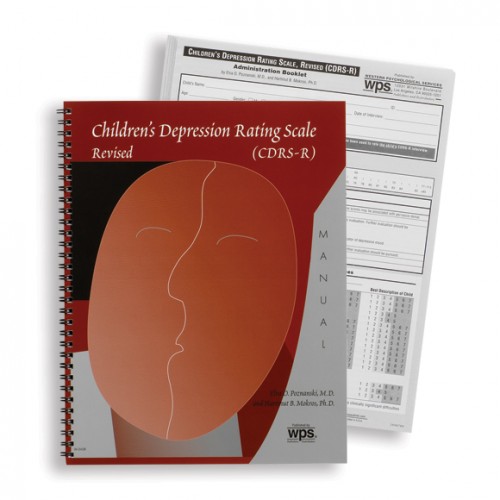Children's Depression Rating Scale - Revised (CDRS-R)
Complete Kit
- Ages 6 - 12 years
- Testing Time 15-20 minutes
- Administration Individual
-
Product Code W-242 ( MR #050479 )
* Qualifications required to purchase this item. Click here to complete the qualifications form.
* Regional restriction: This item is only available for sale within Canada.
*** DISCONTINUED (NO LONGER AVAILABLE) ***
Modeled after the Hamilton Rating Scale for Depression, the Children’s Depression Rating Scale (CDRS-R) has long been used to diagnose depression and determine its severity. Now updated and standardized with complete interpretive and psychometric data, this sensitive rating scale is more useful than ever. In clinical settings, it can be used to diagnose depression and monitor treatment response. In nonclinical contexts, such as schools and pediatric clinics, it can be used as a quick and economical screener, identifying children who need professional intervention.
The CDRS-R is a brief rating scale based on a semi-structured interview with the child (or an adult informant who knows the child well). Designed for 6- to 12-year-olds, and successfully used with adolescents, it can be administered in just 15 to 20 minutes and easily scored in a few minutes more. The interviewer rates 17 symptom areas (including those that serve as DSM-IV criteria for a diagnosis of depression).
The CDRS-R gives you a single Summary Score (a T-Score), with an interpretation of, and recommendations for, six different score ranges. Norms are derived from a nonclinical sample of children who were directly interviewed. The Manual provides interpretive guidelines for CDRS-R scores based on parent interviews.
Unlike self-report inventories, the CDRS-R not only assesses depression, but also takes the first step in the therapeutic process. A direct interview engages children who are isolated and withdrawn (as most depressed children are), bringing them into positive contact and interaction. Using the CDRS-R, treatment begins with evaluation.
- Copyright 1996

 Proud to be Canadian
Proud to be Canadian